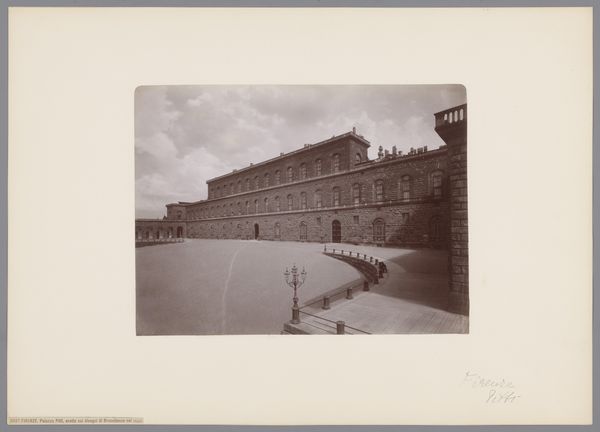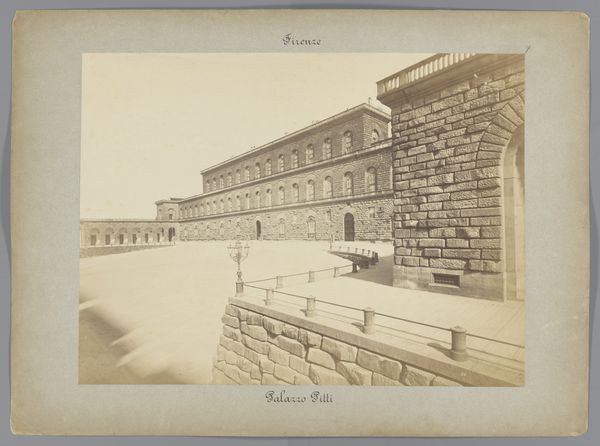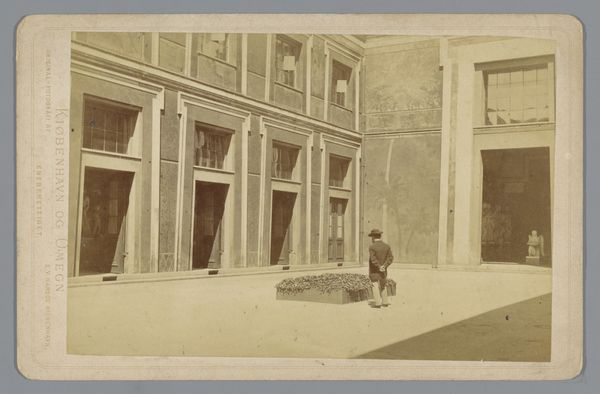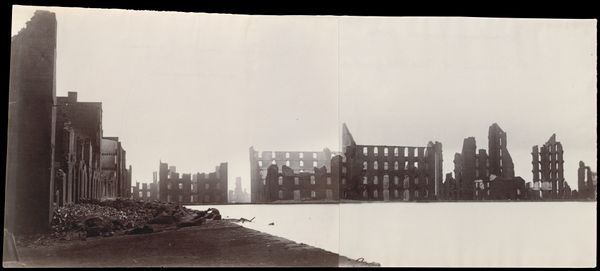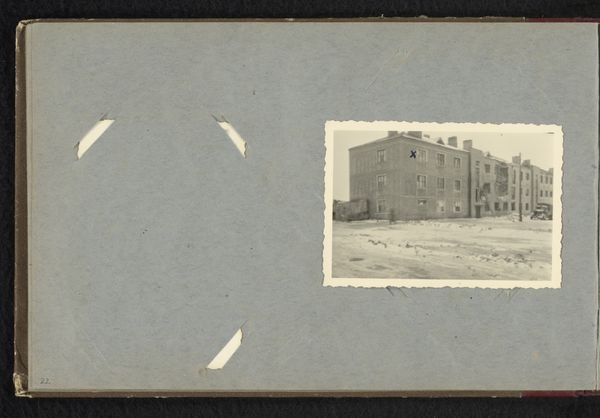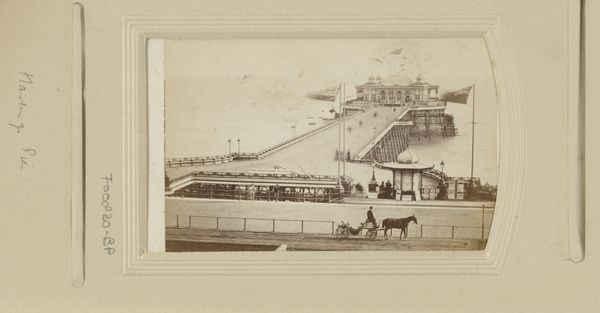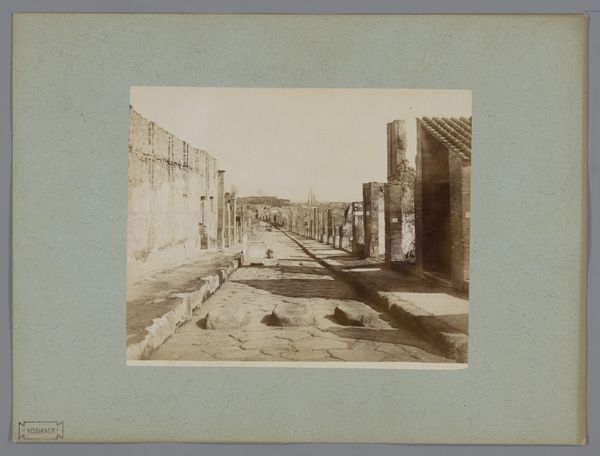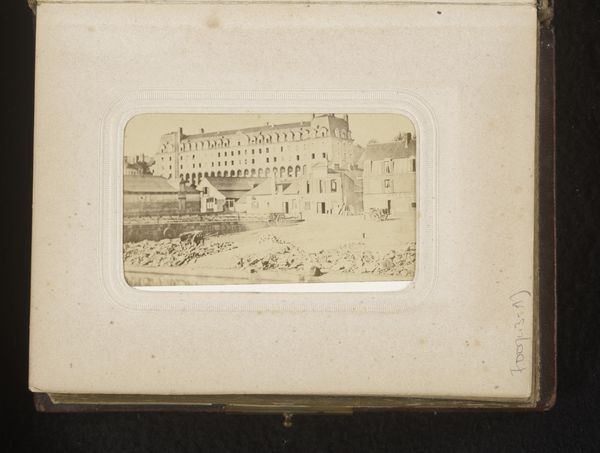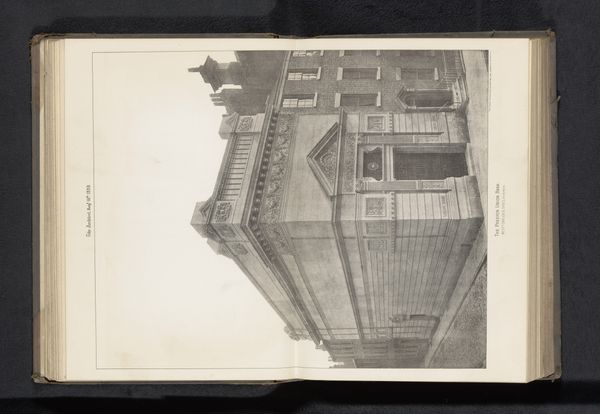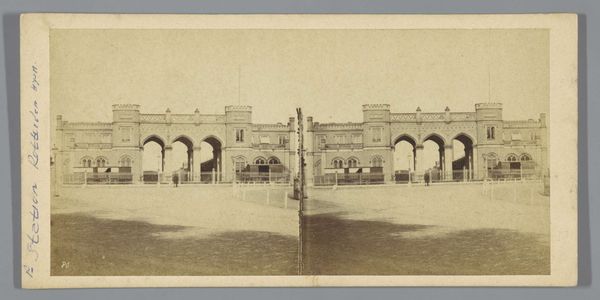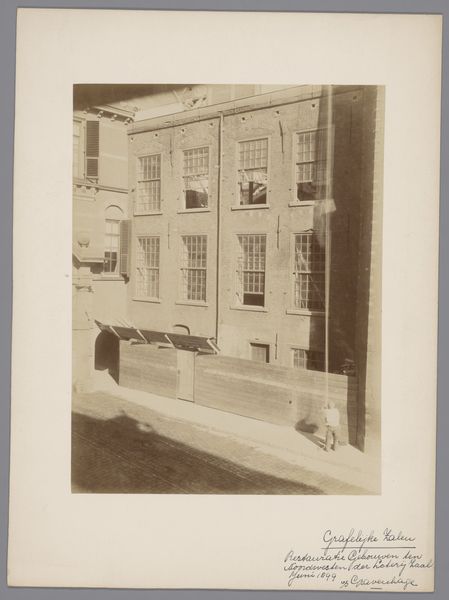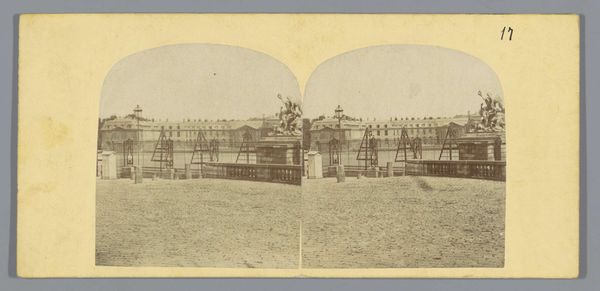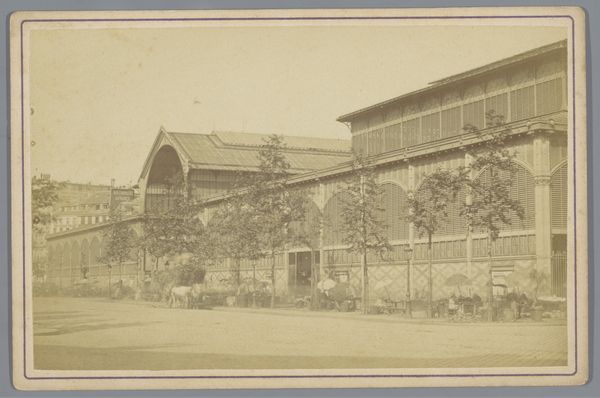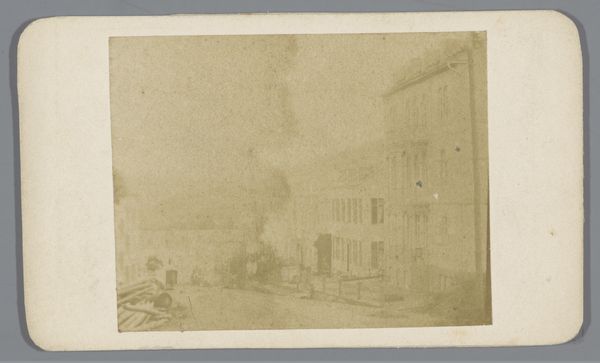
print, photography, albumen-print, architecture
#
16_19th-century
# print
#
landscape
#
photography
#
cityscape
#
italian-renaissance
#
albumen-print
#
architecture
#
realism
Dimensions: height 258 mm, width 356 mm
Copyright: Rijks Museum: Open Domain
Editor: This albumen print, dating from the latter half of the 19th century, showcases the Palazzo Pitti in Florence as captured by Fratelli Alinari. There's a stillness and formality to the scene, and I'm struck by how the light emphasizes the sheer scale of the architecture. What can you tell me about it? Curator: What stands out to me is how this photograph, produced by the Alinari brothers, contributes to the construction of a particular image of Italian Renaissance power and heritage. The Palazzo Pitti, originally the residence of a powerful Florentine family, speaks volumes about social stratification and the display of wealth. Do you notice anything about the perspective? Editor: I do see that the vantage point gives us a sense of grandeur, like we are meant to feel small in comparison. Curator: Precisely. Consider how this image circulated—likely reaching audiences fascinated by European aristocracy. The photograph participates in the ongoing narrative of Italian cultural superiority, potentially overshadowing the complex labor and social dynamics that supported such architectural achievements. Editor: So it’s not just a picture of a pretty building, it’s part of a bigger story about power? Curator: Exactly! It invites us to question whose perspectives are privileged and whose are marginalized within the frame. We can use contemporary lenses to decode those complexities. For instance, considering who had the resources to commission and enjoy these spaces compared to those who constructed them. Editor: That's fascinating. I never considered the political implications of a simple photograph before. I'll definitely view such images differently going forward. Curator: I am happy that this has broadened your perception. This interplay between aesthetics, power, and representation is where art history gets really interesting.
Comments
No comments
Be the first to comment and join the conversation on the ultimate creative platform.
